Having grown up in South Africa with the British influence of marmalade, I love the infusion and addition of citrus peel in dishes. When our tangerine tree was begging to be picked, I decided to not only use the peel for citrus clove marmalade and citrus cranberry marmalade, but also add it to this walnut and citrus sourdough bread as an inclusion. Some friends came over and were interested in tasting this interesting looking bread and they LOVED it! I made several versions of this bread to experiment with the peel and in the end, it's really personal preference.
I also changed the technique of this sourdough bread to allow the sourdough to extract much of the micro-organisms in the wheat germ for maximum nutrition. It may take extra time to proof, but it's well worth the increase in nutritional value. I also believe it affects the texture of the bread, making it softer.
Tips for making walnut and citrus sourdough bread
Walnuts.
I'm usually not a big fan of walnuts, but started to add them into my diet when I heard that walnuts are a superfood and especially good for brain function. What is especially healthy is the thin papery outer layer which contains a high concentration of polyphenols. This was the part of the walnut which I really hated and tried to remove! In doing some research on polyphenols, I discovered that these polyphenols have an effect on plant coloring and may be a reason why this bread has the beautiful marbled effect.
Citrus peel.
For this walnut and citrus sourdough bread, I used tangerine peel. I've experimented with tiny diced inclusions and grated peel. The tiny diced peel give a more pronounced taste and the larger pieces definitely affect the texture of the bread. If you like chunky marmalade, the tiny diced pieces will appeal to your tastebuds. If you prefer a smoother texture and a more subtle citrus flavor, grate or zest the peel to avoid the pungent, white pith (tissue lining) of the skin. I also experimented using the juice but found that the effect on the flavor was not significant and actually, rather tart!
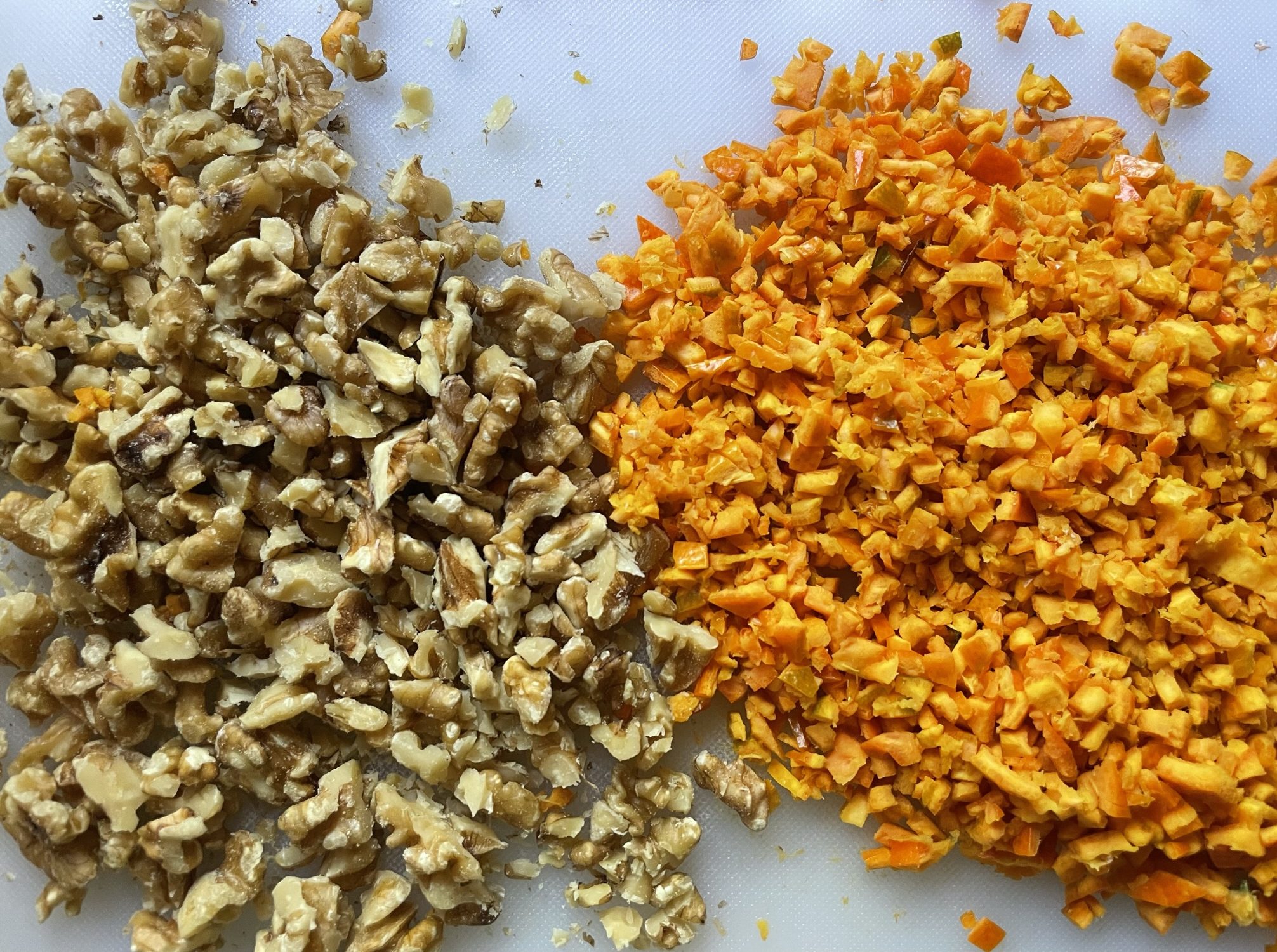
Chopped walnuts and tangerine peel
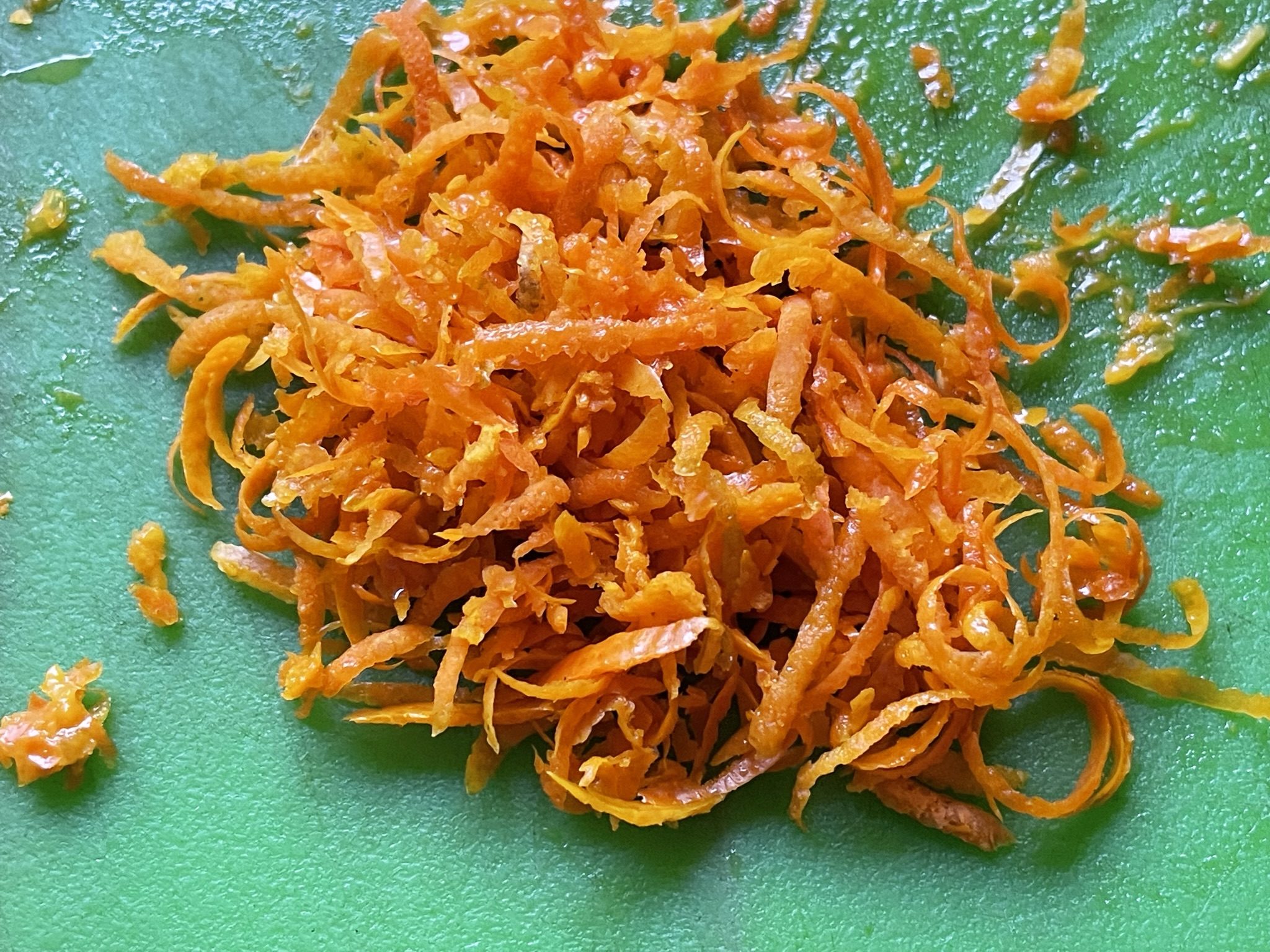
Grated tangerine peel.
Adding Inclusions.
Since you want your walnuts and citrus to be uniformly distributed throughout the bread, it is best to add it during the stretch and fold process. This allows the inclusions enough time to be fully incorporated into the dough. Adding it at the end will result in a swirl of inclusions which may look good but would really be a mouthful of nuts and peel! Initially, the inclusions will not be completely incorporated in the dough. However, after several stretch and folds, the walnuts and citrus peel will start to be uniformally distributed.
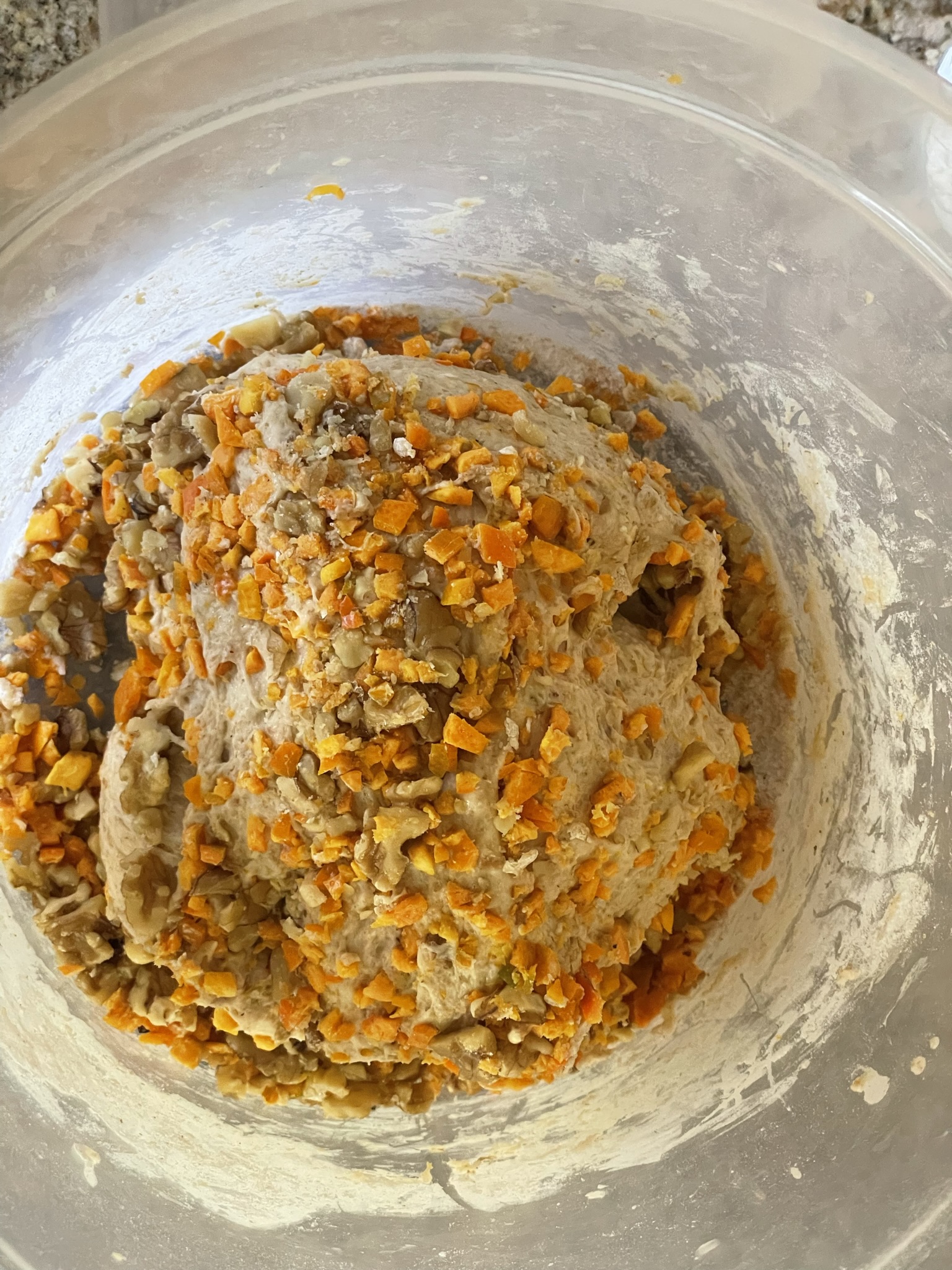
Add chopped walnuts and citrus peel
Proofing.
I have found that about a 36 hour cold proof is ideal for this bread. After shaping and placing it in a banneton. Allow the dough for this walnut and citrus sourdough bread to proof at room temperature for an hour (70 degrees fahrenheit or 21 degrees celcius) before placing it in the refrigerator. The cold dough makes it easier to score and maximize fermentation.
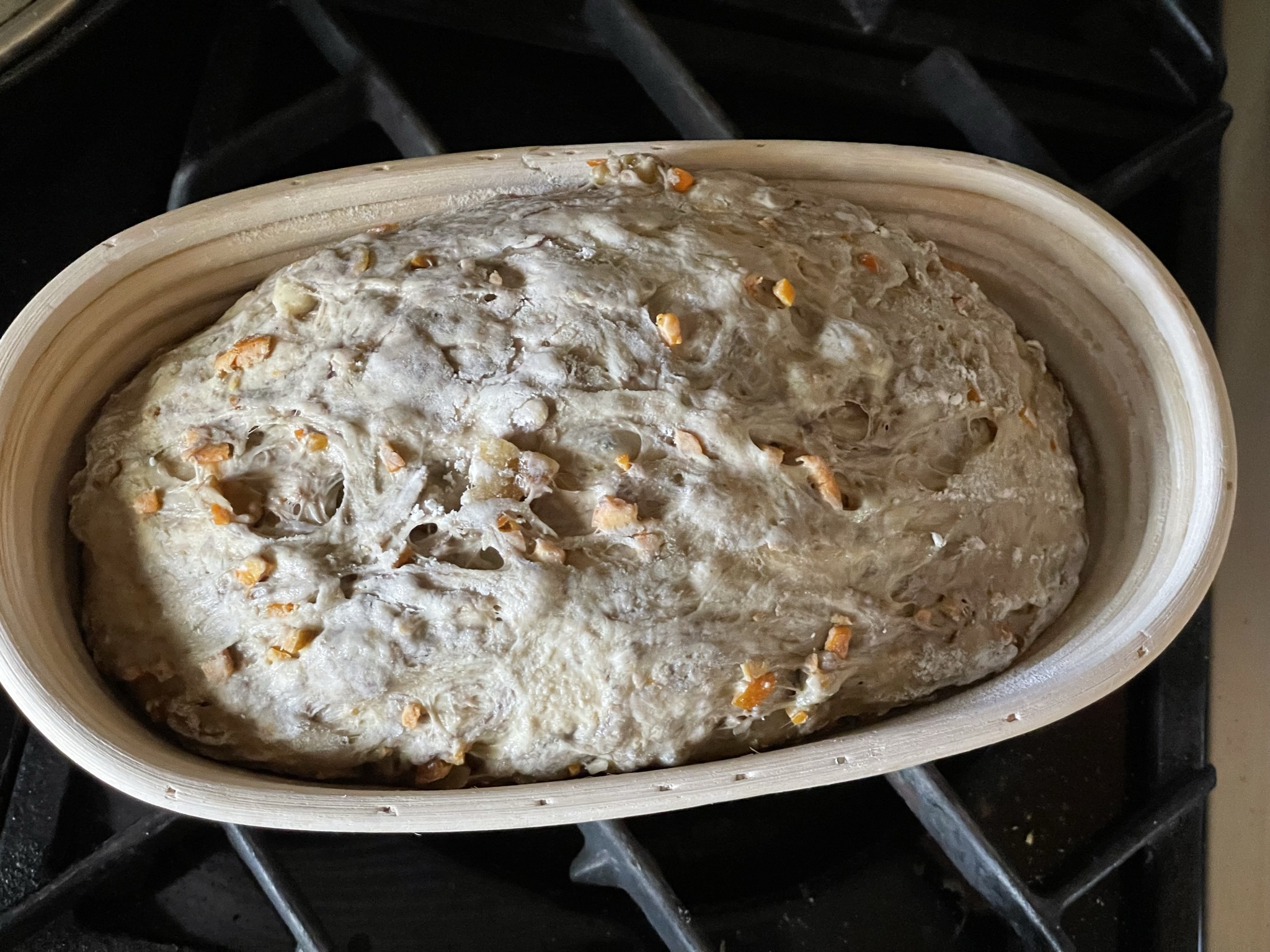
Walnut citrus sourdough bread
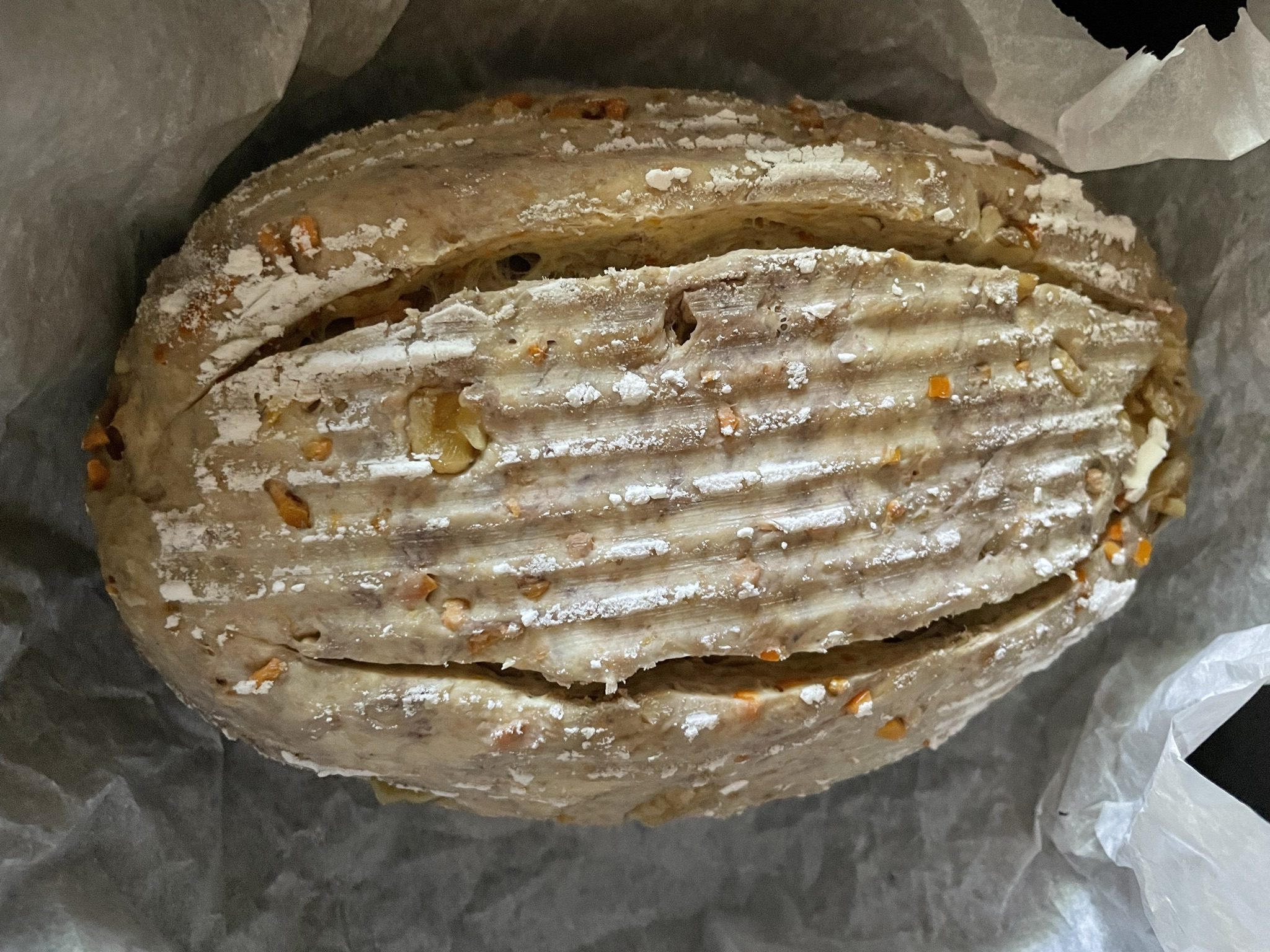
Scored walnut and citrus sourdough bread.
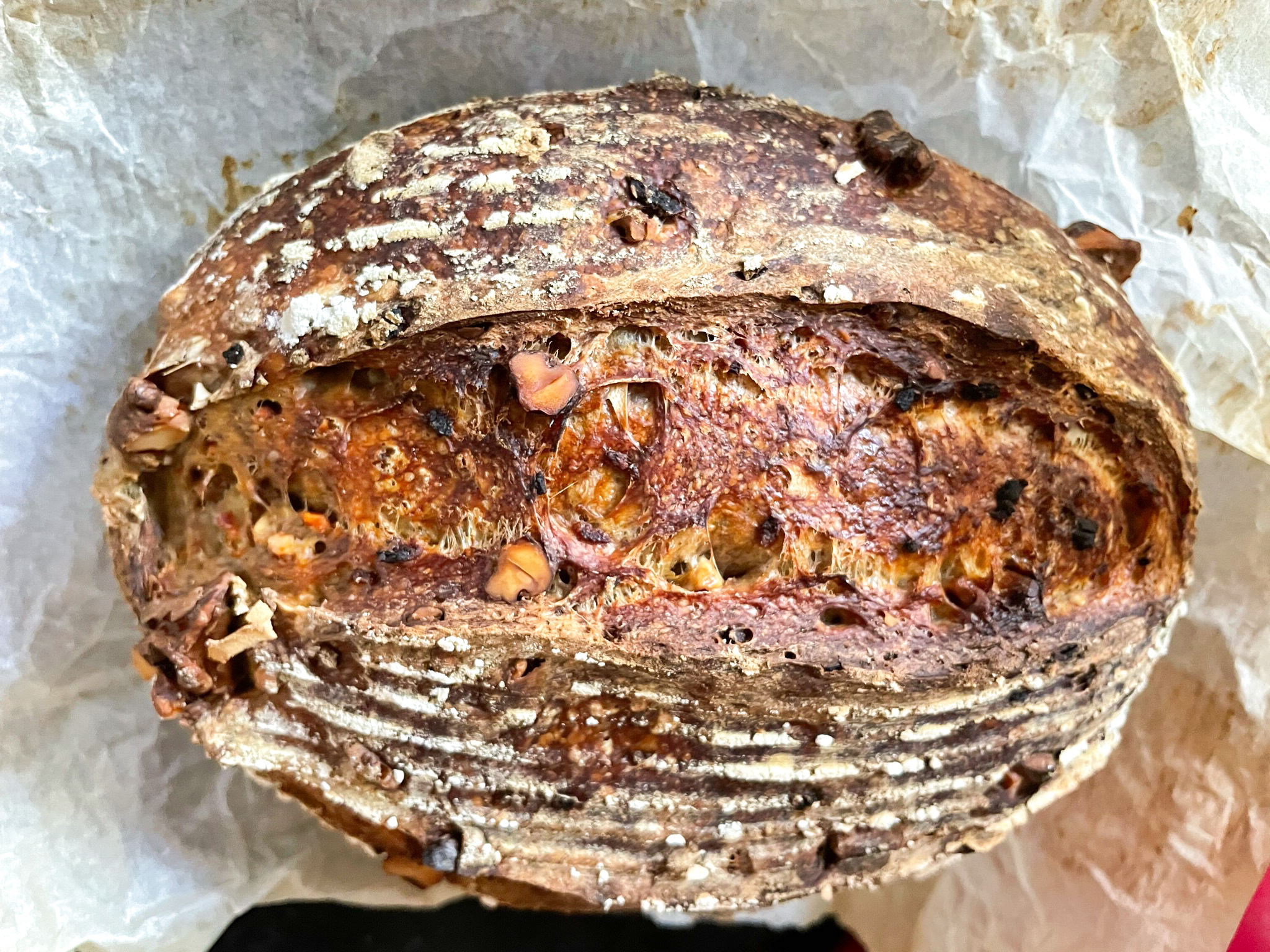
Baked walnut and citrus sourdough bread
If you make this walnut and citrus sourdough bread, let me know what you think in the comment section.
CITRUS WALNUT SOURDOUGH BREAD
Equipment
- Cast Iron dutch oven
- 2 Large Bowls
- Bread lame, razor or pair of scissors
- Dish towel to cover dough
Ingredients
- 350 grams water (80 degrees-lukewarm)
- 400 grams bread flour
- 100 grams whole wheat flour
- 9 grams salt
- rice / bread flour mixture Used for dusting your proofing bowl / banneton
- 100 grams levain See "What is levain and how to make it"
- 50-100 grams citrus peel tiny diced or grated. Taste is stronger when diced and milder when grated.
- 100 grams chopped walnuts
Instructions
Preparing the inclusions
- Chop walnuts100 grams chopped walnuts
- Chop or grate citrus peel50-100 grams citrus peel
Making your bread dough
- Sift you bread and wheat flour into a bowl. I do this because some bread flours are very refined and clumpy. Sifting helps remove those clumps.400 grams bread flour, 100 grams whole wheat flour, 100 grams levain
- In another bowl, add your levain to your lukewarm water and stir to mix. It does not have to dissolve.350 grams water
- Mix in your flour mix and let sit for 45 minutes. This allows your dough to autolyze, allowing the flour to completely absorb all the liquid making it easier to work with.Set timer for 30 minutes
Kneading the bread dough.
- The dough is now ready for bulk fermentation where it will develop its flavor and body! Ambient temperatures between 70-80 degrees Fahrenheit will take 3 hours for bulk fermentation
- Add the salt, chopped walnuts and tangerine peel after the dough has autolyzed.9 grams salt, 50-100 grams citrus peel, 100 grams chopped walnuts
- I knead the dough by hand...very therapeutic. Using wet hands, I pull and stretch the dough out at the top and fold it back on itself, I then rotate the dough a quarter turn and do the same thing 16 times. (4 complete revolutions!) Don't worry if the inclusions are not sticking to the dough. It will be incorporated ...eventually!
- Let dough rest for 30 minutes. You will notice that the dough will become more pliable with time. Cover and let sit for 30 minutes. Don’t forget to set your timer! Set timer for 30 minutes
- Knead dough
- Let it rest for 30 minutes.Set timer for 30 minutes
- Knead dough
- Let dough rest for 30 minutesSet timer for 30 minutes
- Knead dough
- Let dough rest for 30 minutesSet timer for 30 minutes
- Knead dough
- Let dough rest for 30 minutesSet timer for 30 minutes
- Knead dough
- Let dough rest for 30 minutesSet timer for 30 minutes
- Knead dough. The dough should be soft and pliable. If not, continue bulk fermentation for another 30 mins - 1 hour.
Shaping your bread dough.
- Pull dough out of the container. You can make smaller bolles by using about 250 grams of dough (a half of your recipe) in a 2 quart cast iron dutch oven. See Cutting and Shaping your Dough in my Tips & Tricks section.
- On a floured surface, lightly dust your dough with flour and work it into a round by pulling it towards you and rotating. It should become somewhat taut as you pull the dough, part of your goal is to remove most of the air bubbles that were created during the fermentation process. I have found that if you keep these air bubbles, your bread will be very porous with a lot of air bubbles (almost like a ciabatta). Some people like this, other people want a little more substance.
- Let it sit for 20 minutes. Set timer for 10 minutes
- Shape again. See Cutting and Shaping your Dough in my Tips & Tricks section.
- Prepare your banneton (Coiled rattan baskets for proofing) by generously dusting the bowl or banneton with your bread and rice flour mixture. Dust the tops of your loaves with flour and place it in a bowl or banneton with the dome side on the bottom of the banneton.rice / bread flour mixture
Proofing your dough - Quick Proof
- Cover your banneton with a damp cloth and let rise in a warm place for 2 hours. I usually put this in my oven with the oven light on.Proof dough for 120 minutes
- Take your dough out and preheat oven to 500° fahrenheit (260° Celcius) with your cast iron dutch oven in it. (Should take about an hour depending to get your cast iron pot to the desired temperature.) This will be a total of 3 hours of proofing. I have proofed bread for 4 hours. However, overproofing your dough with cause your dough to lose its ability to have enough strength for the "oven-spring" (the last rise in the oven as a result of intense heat).
Proofing your dough - Slow Proof
- Allow dough to proof at room temperature for one hour before cold proofing.
- Place your banneton in a plastic bag. Seal it with a clip. Place it in the refrigerator for 36 hours.
- Preheat oven to 500° fahrenheit (260° Celcius) with your cast iron dutch oven in it. (Should take about an hour depending to get your cast iron pot to the desired temperature.
Scoring your dough.
- The dough should be fairly firm but not impossible to handle after proofing. Take a piece of parchment paper that will generously cover the top of the bowl/banneton. Crumple it so that it folds easily in the pot. Place it over the bowl/banneton.
- Flip the banneton over. The dough is now ready for scoring
- Dust the top of the dough with a little more flour if necessary or brush off excess flour from proofing. Score the bread by cutting it with a razor blade, bread lame, or a pair of scissors. Scoring the bread allows for oven spring when the dough expands quickly during baking and gives your dough a pretty design. See Scoring your dough in my Tips & Tricks section.
- Gently lower your scored bread into the dutch oven. If you have a cast iron skillet / dutch oven set as shown on my "Helpful Tools" section. After scoring, place the dough in the skillet of the set and cover the dough with the dutch-oven section. Place it in the oven with the skillet on the bottom.
- Cover.
Baking your bread
- Preheat oven temperature to 500°F
- Reduce oven temperature to 450°F
- Bake for 25 minutes. Smaller 2 quart bolles should bake for 20 minutes.Set timer for 25 minutes for large bolle Set timer for 20 minutes for small bolle
- Remove the lid and continue baking for an additional 25 or 20 minutes respectively.Set timer for 25 minutes for large bolle Set timer for 20 minutes for small bolle
- Remove from oven and remove from dutch oven and let cool on wire rack.
- To bake the second loaf, after removing the first loaf, bring the oven temperature back to 500 degrees, wipe the dutch oven with a clean dry towel, place the dutch oven in it for 10 minutes and bake according to recipe.
- Bread should cool for at least an hour before attempting to slice into it!

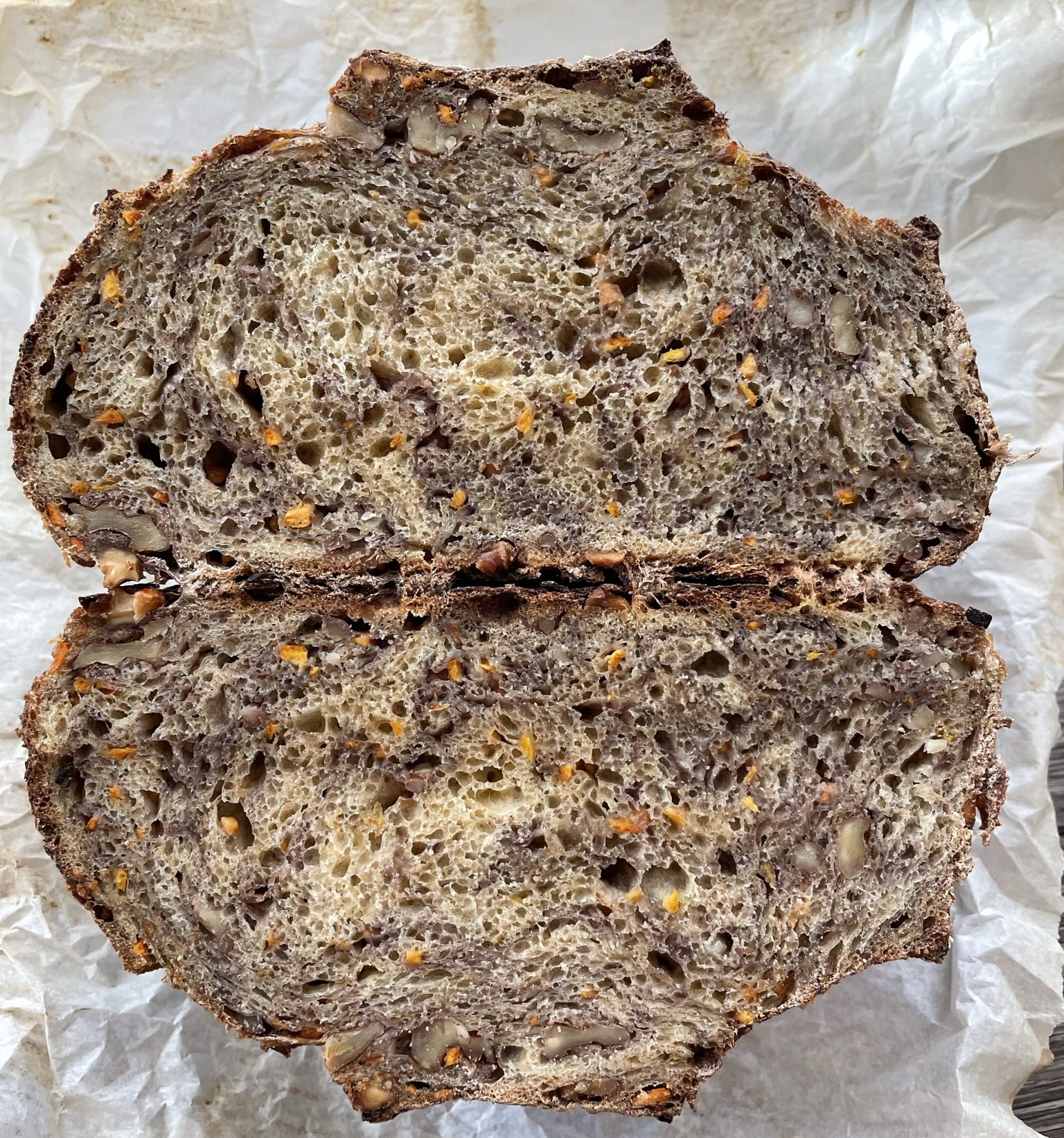
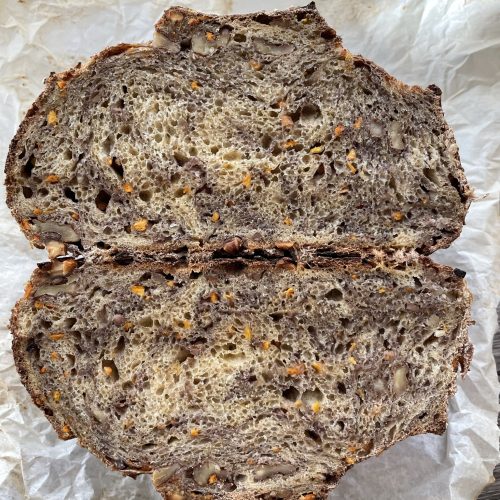
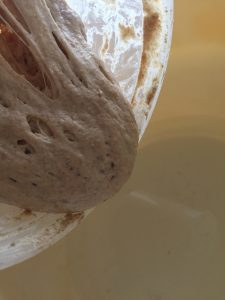
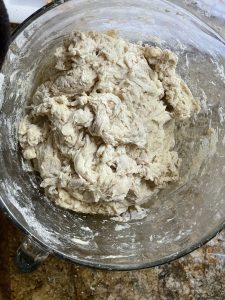
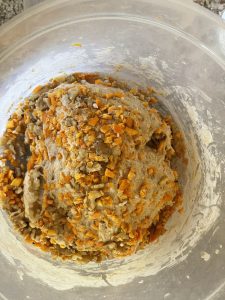
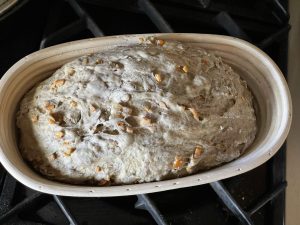
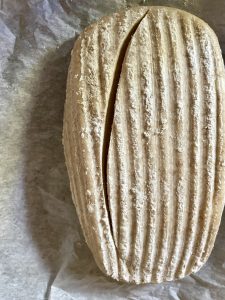
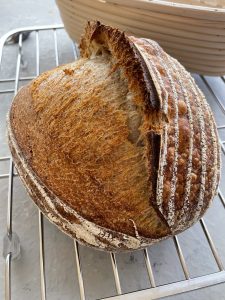
The walnut and citrus bread sounds great, but unfortunately, a different recipe ( rosemary olive bread ) is provided. This was maybe by mistake ?
Thanks.
Ralphy.